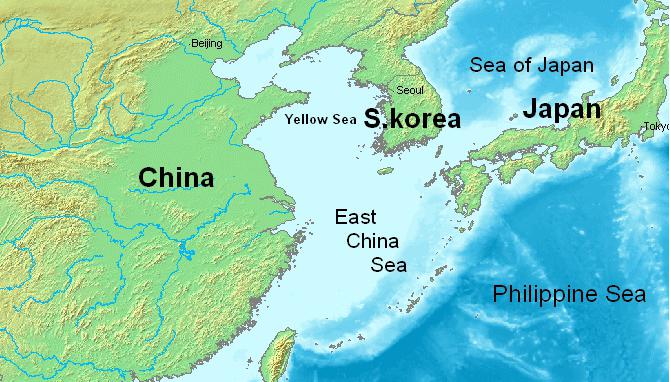Donghai, Namhae, Dong Hai, Pinyin - this area of the Pacific Ocean has many names. On its shores, three ancient civilizations of mankind arose and reached their peak: Chinese, Japanese and Korean. Its shelf is rich in huge reserves of gas and oil. Who will develop this wealth depends on how the issue of the ownership of some islands is resolved, and what the political map will look like. The East China Sea, in the waters of which lobsters and giant crabs are caught, trepangs and algae are collected, where pearls are grown and salt is evaporated - a real natural treasury. Let's get to know this area closer.
East China Sea on the map
This sea is part of the Pacific Ocean. It is located off the eastern coast of Asia. If we ask ourselves whether this sea is inland, then the map shows us that it is semi-closed. It is separated from the main part of the Pacific Ocean by the Japanese islands of Ryukyu and Kyushu. In the west, the coast of China serves as a natural border. The island of Taiwan is considered the southern cordon. If you look to the north, then from this side, the East China Sea through the Korean Channel connects with the Yellow and Japanese. It should be said that the straits near the Ryukyu Islands are very deep - up to 1572 meters. On the political map of the world, the sea is located between China, Korea and Japan. This explains the many names of the water area. After all, every nation calls it depending on its location relative to the country. The Chinese word "Donghai" means "East Sea", the Korean "Namhe" means "South". And the Ministry of Foreign Affairs of Japan since 2004 has called this water area quite ornate. Due to territorial disputes with China over the island of Senkaku, and with Korea over Socotra, in official documents it is called the “Sea of the East Side”.

Geographic characteristics
The area of the water area is more than eight hundred thirty thousand square kilometers. With an average depth of 349 meters, the bottom is very uneven. Reefs, shallows, banks are not uncommon in the west. Compounding the complexity of shipping and the turbidity of the Yangtze, the longest and longest river in the Eurasian continent. Reefs and bottom sediments, which in their western part are rich in the East China Sea, are difficult to display on the map. Earthquakes often occur here, which not only change the relief of the shelf, but also cause tsunamis. In addition, about three to four times a year, typhoons sweep through the water area, causing major damage. The maximum depth (2719 meters) in the east of the sea. The average salinity of the water is 33 ppm; at the mouth of large rivers this indicator drops to 5 ‰. On the west coast there are semidiurnal tides up to seven and a half meters.
Climate
In the subtropical zone, where the East China Sea is located, the water never freezes. Even in its northern part in winter the temperature does not fall below +7 ° C. The coldest here is in the month of February. But even then, in the south of the water area, water has a temperature of + 16 ° C. But in August it warms up to + 27-28 ° C. But the weather here is very changeable. The warm current of Kuroshio and cold masses of air from the mainland create fogs, rains, drizzle in winter. In summer, the East China Sea is in the monsoon area. In the tropical zone, typhoons arise, which move northward, causing heavy winds, storms and heavy rains. This greatly complicates the navigation. Nevertheless, the water area is the most important transport artery. Through it pass the paths to the Yellow, Japanese and Philippine Seas. Therefore, conflicts arise because of it.
Biological resources
Due to the warm climate, the East China Sea boasts a species diversity of flora and fauna. The number of phytoplankton, as well as green, red and brown algae, increases from west to east. In this water area, fishing, the extraction of pearls and mollusks have long been conducted. On an industrial scale, tuna, sardine, mackerel, herring, flounder, many species of sharks are caught here. The local "milk" khanos fish with very tender meat is especially appreciated. It is even grown in artificial conditions. The East China Sea is also rich in aquatic mammals. Among them should be noted dugongs, seals and numerous species of dolphins. But since the water area is poor in plankton, the waters of the sea never attract blue whales.